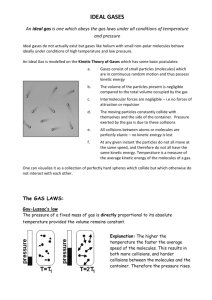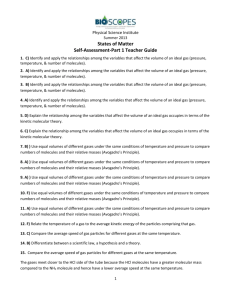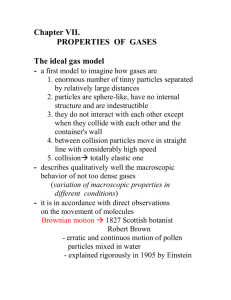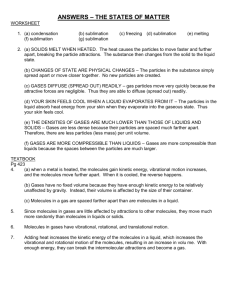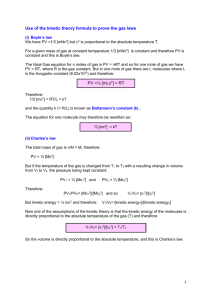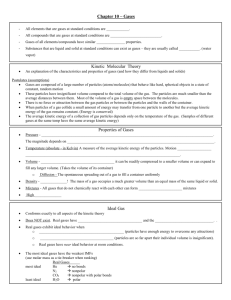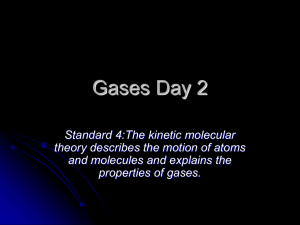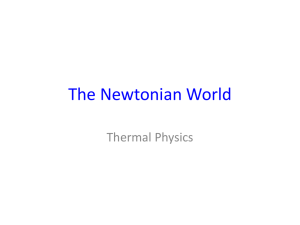Kinetic Molecular Theory of Gases
advertisement
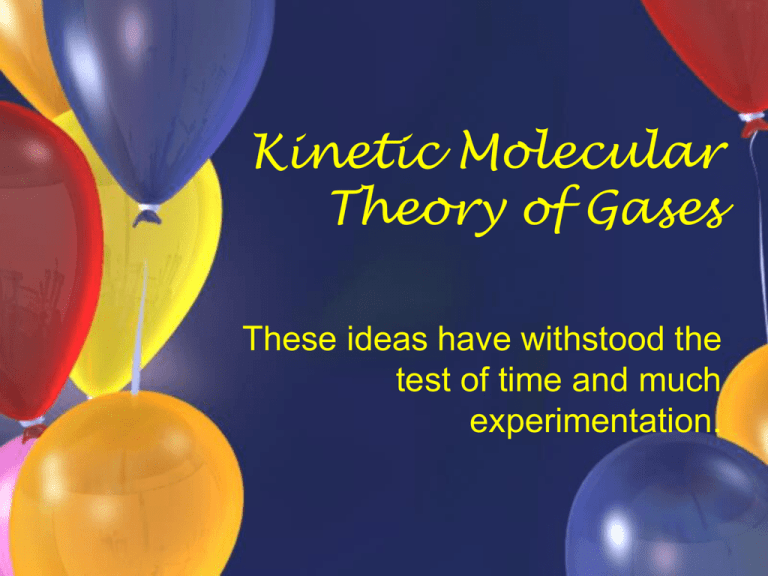
Kinetic Molecular Theory of Gases These ideas have withstood the test of time and much experimentation. Six Postulates of the Kinetic Molecular Theory of Gases A scientific postulate is a statement assumed to be true unless proven otherwise. Six Postulates 1. A gas consists of very small particles, each of which has a mass. Example: An inflated basketball weighs more than a deflated basketball. Six Postulates 2. The distances separating gas particles are relatively large. The volume of the gas particles is assumed to be zero because it is negligible compared with the total volume in which the gas is contained. This is a fair assumption. Six Postulates 3. Gas particles are in constant, rapid, random motion. Gases immediately fill a container and quickly diffuse from one area to another. This is a good description of how gas molecules behave Six Postulates 4. Collisions of gas particles with each other or with the walls of the container are perfectly elastic. Unlike “bouncing balls,” no energy of motion is lost. Six Postulates 5. The average kinetic energy of gas particles depends only on the temperature of the gas. The kinetic energy of gas molecules is proportional to their temperature in Kelvins -- a good description. KE = mv2 / 2 High T Higher KE Low T Lower KE Six Postulates 6. Gas particles exert no force on one another. Attractive forces between gas particles is assumed to be zero. Gas particles do not slow down and condense into a liquid because they exert only very weak attractive forces upon each other. Gas molecules don’t interact with one another. Depending on the gas, this can be good or bad assumption. H2O vapor has much stronger intermolecular interactions than He. Real Gas -- Ideal Gas Very high temperatures and very low pressure help real gases simulate ideal gases. @ High Temperatures: Gas molecules move so quickly that there is not time to interact. @ Low Pressure: Gas molecules don’t encounter each other very often. Avogadro’s Principle When measured at constant temperature and pressure, equal volumes of gases contain equal numbers of moles. Avogadro’s Principle • The volume of a gas is directly proportional its number of moles (n), regardless of the identity of the gas V n V n • Ideal gas molecules don’t have volume, molecule size doesn’t matter • Ideal gases don’t interact with each other, no intermolecular forces change the volume of the gas V n Therefore… Ideal gas molecules behave according to Avogadro’s Principle. Standard Temperature & Pressure STP • 1 atmosphere pressure (atm) • 273 Kelvin (K) or 0 0C Standard Molar Volume • The volume occupied by one mole of gas at STP • 22.4 L
